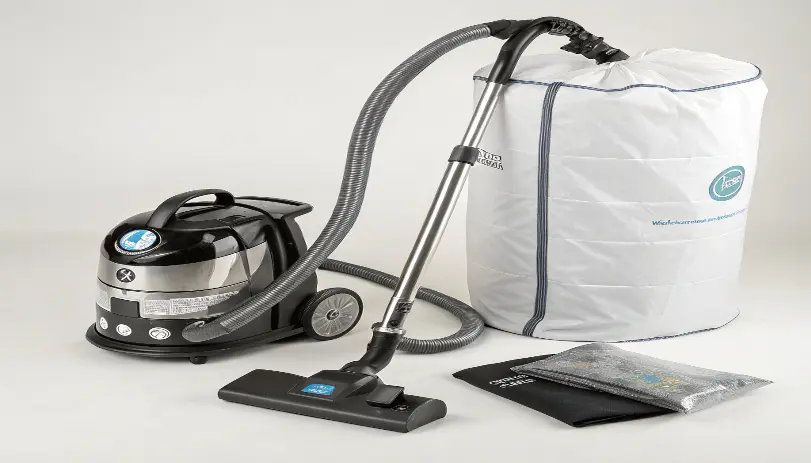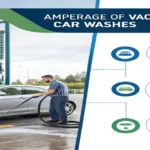If you’ve been asking yourself, “Why is my vacuum bag not vacuuming?” you’re not alone. This issue can be caused by anything from a clogged bag to improper installation or even damage to the bag itself.
Understanding the root cause can help you fix the problem quickly and get your vacuum back in top working condition.
In this article, I am going to share what I know about how to fix this common issue and a few tips that I have learned.
The Basic Stuff: Why Your Vacuum Sealer Might Be Acting Up
Let’s start by addressing the elephant in the room. Sometimes, the most simple solutions are right in front of us. We’re constantly finding answers in the most awkward places.
I can say with confidence that around 80% of problems are because of several ordinary problems.
To begin with, examine the sealing strip. Is the sealing strip loaded with minute pieces of food or a plastic residue?
In most cases, this will be the issue. Picture attempting to stick tape to the dirt-filled surface.
It won’t get attached right and it won’t work how it is intended. And those gaskets, oh!
They’re like the secret magicians of vacuum sealing. And if they go bad everything goes for a toss. This is what I would typically go for first.”
- The sealing strip (give it a good wipe with a damp cloth)
- Those rubber gaskets (they should be flexible, not brittle)
- The lid alignment (sometimes it’s just slightly off)
Let’s Talk About Those Vacuum Bags
All right, this one drives me crazy — not all vacuum bags are equal!
I came to this realization the hard way, after spending heaps on generic bags that looked like a good deal but turned out to be about as functional as a chocolate teapot.
Pro tip: I’ve found that using bags from the same manufacturer as your vacuum sealer makes a massive difference.
Think about it like this: you wouldn’t put discount-store ink in a fancy printer, right? The same principle applies here. The wrong bags can cause:
- Weak seals that pop open in the freezer
- Frustrating failed attempts at vacuuming
- Wasted food (and money!)
The Overheating Issue Nobody Talks About
Here’s something they don’t tell you in the manual: these machines need breaks! I used to try to power through dozens of bags in one go, and guess what?
My sealer would just give up halfway through. Now I know better. Think of your vacuum sealer like a marathon runner – it needs proper pacing.
Here’s my time-tested approach:
- Seal 3-4 bags
- Take a 20-second breather
- Continue with the next batch
This simple change made a huge difference in my meal prep sessions.
The Mystery of the Disappearing Seal
Ever sealed a bag perfectly, only to find it’s lost its seal a few days later? It’s like a magic trick, but not the fun kind. After countless failed attempts and some serious investigation, I’ve figured out the main culprits.
The most common reasons for seal failure:
- Tiny food particles playing hide-and-seek in the seal area
- Sneaky wrinkles in the bag (they’re easier to miss than you’d think)
- Overstuffing (we’ve all been guilty of this one!)
The Art of Proper Bag Preparation
Listen, I know we all want to just throw stuff in bags and seal them up, but a little prep work goes a long way.
Here’s what I’ve learned works best:
First, leave about two thumb-widths (roughly 2cm) of space at the top. Think of it as giving your sealer some breathing room.
For wet foods (I’m looking at you, marinated meats), I always use a paper towel as a barrier. It’s like giving your seal a little insurance policy.
Getting Technical: The Gasket Guide
Let me tell you about gaskets – they’re like the weatherstripping on your doors. When they’re good, you don’t think about them. When they’re bad, everything goes wrong.
How to keep your gaskets happy:
- Wipe them down after each use (just like you’d clean your kitchen counter)
- Check for cracks monthly (mark it in your calendar!)
- Replace them at the first sign of wear (trust me, it’s worth it)
Testing Your Vacuum Sealer Like a Pro
Want to know a trick I learned from a food preservation expert? Here’s my favorite way to test if your sealer is working properly:
Test Type What You Need, How to Do It, What to Look For The Water Test Small bag, water seal bag with small amount of water leaks or drips Paper TestStrip of paper placed between seal area should hold firmlyThe Compress TestRegular bagSeal empty bag should stay flat

Maintenance Secrets Nobody Tells You About
Here’s something I wish someone had told me years ago: preventative maintenance is everything. It’s like changing your car’s oil – boring but essential. My monthly maintenance routine:
- Deep clean the drip tray (you’d be surprised what collects there)
- Check all sealing components
- Test the vacuum strength
- Clean the nozzle (carefully!)
When Your Vacuum Pump Goes Silent
If your pump stops working, don’t panic! I’ve fixed this issue multiple times. Check these things:
- Is the hose connected properly? (Sometimes it just needs a firm push)
- Could there be a tiny obstruction? (Even a grain of rice can cause problems)
- Is everything clicking into place when you close the lid?
The Big Question: Repair or Replace?
After working with these machines for years, here’s when I recommend considering a replacement:
- When repairs cost more than 50% of a new unit
- If it’s more than 5 years old and having frequent issues
- When parts become hard to find
Additional Tips for Vacuum Storage Success
Understanding Different Types of Storage Bags
When it comes to vacuum storage bags and proper vacuuming, the type of bag you’re using makes all the difference. Various brands of bags are available, from FoodSaver to Neusu, and each has its unique features.
The key is finding compatible bags that work with your specific vacuum sealer. Remember, a perfect seal depends largely on using the right bags and understanding how to seal around the edges properly.
Mastering the Sealing Process
To get a good seal, start by removing air gradually from one end of the bag. Using your finger and thumb, carefully check the parts of the zip to ensure they’re properly aligned.
Don’t overfill the bags, as this can hinder the vacuum process and prevent proper suction.
A common problem is trying to seal bags that are too full – always leave adequate space at the top of the bag.
Proper Maintenance for Longevity
Inside the vacuum sealer, dirt or debris can accumulate over time, affecting performance.
Regular cleaning of the valve and heating element is crucial for maintaining suction power.
When the sealer works fine initially but starts having issues, check for any faulty components or obstructions that may not be able to allow air to escape properly.
Troubleshooting Common Issues
If your vacuum sealer isn’t working:
- Ensure the latch is fully closed
- Check if batteries are charged (for portable models)
- Allow 10 to 20 seconds between seals
- Remove any folds or wrinkles in the bag
- Clear any debris from the sealing area
Storage Solutions and Organization
For a better experience with vacuum storage, consider using a hanger system to organize your sealed bags.
This method helps prevent damage and makes it easier to access your stored items. Whether you’re storing clothes or food, proper organization ensures everything stays sealed and protected.
FAQs
Q: My bags lose their seal after freezing. Why?
A: In my experience, this usually happens when moisture gets trapped in the seal area. Try using a paper towel barrier when sealing moist foods.
Q: How many times can I reuse vacuum bags?
A: I’ve successfully reused bags 3-4 times for similar foods. Just make sure to wash and dry them thoroughly between uses.
Q: Why does my sealer sometimes make a weird noise?
A: If it sounds like it’s struggling, check for obstructions in the vacuum channel. I once found a piece of dried rice causing all sorts of chaos!
Key Things to Remember
- Clean your sealer after every use (future you will thank present you)
- Don’t rush the process – good sealing takes time
- Keep spare gaskets on hand (they’re like spare tires for your sealer)
- When in doubt, check the seal area first
- Regular maintenance prevents most major issues
- Quality bags make a world of difference
- Give your machine rest breaks during big batch sessions
- Keep the user manual handy (or bookmark this guide!)
Remember: A well-maintained vacuum sealer can last for years. It’s worth taking the time to learn its quirks and treat it right.
I hope this guide helps you solve your vacuum sealing issues! If you’ve got any other questions or want to share your own experiences, drop a comment below.
I’d love to hear about your vacuum sealing adventures and help troubleshoot any problems you’re facing.
Hey, I’m Abdul Manan, a vacuum enthusiast with a knack for simplifying cleaning. I love sharing tips, tricks, and insights to help you get the most out of your vacuum. Let’s tackle cleaning the smart way!










